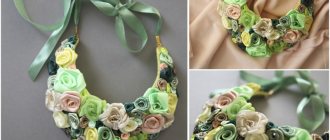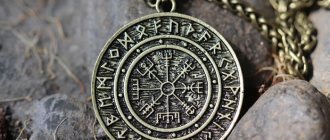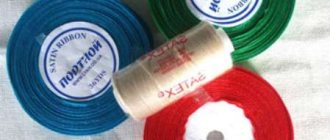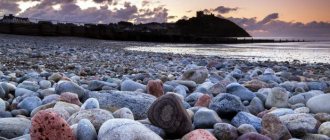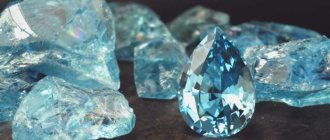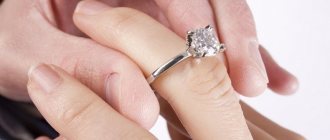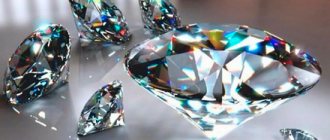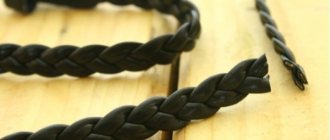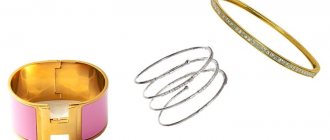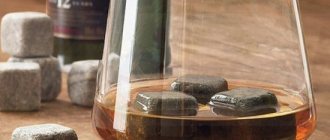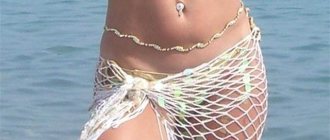Sandstone is one of the oldest building materials donated by nature itself. The legendary Egyptian pyramids, which have survived more than one millennium, were built from this stone. In modern construction, sandstone is also used quite widely, primarily for cladding facades. Such buildings look very attractive, and in addition, they have a number of advantages in terms of operation. True, before choosing sandstone as a facing material, it is necessary to study the characteristics of the stone and the rules for working with it.
Facade finishing with yellow limestone - sandstone
Sandstone for facade
What is sandstone?
The main component of the stone is tightly compressed sand. In addition, its composition includes small shells, clay and other organic compounds - their ratio depends on the specific type of sandstone. For example, shell rock, as the name suggests, is an accumulation of small shells that create a porous material with cells, and marl sandstone consists primarily of clay and calcium carbonate. Stone is mined in almost all parts of the world and used in any form, including chips, slabs for surface cladding (treated or untreated), crushed stone, etc.
Sedimentary rock made from compressed sand
Artificial sandstone
Technical characteristics of sandstone
| Thickness | Strength | Frost resistance | Water absorption | Radioactivity |
| 10-50 mm | 800 kg/cm3 | 200 cycles | Around 5% | Absent |
In other words, sandstone is environmentally friendly, safe for human health, has high strength and resistance to negative factors. Another advantage of sandstone is its wide range of colors, making it easy to choose a finish for any style and landscape.
Natural sandstone stone is a unique natural decorative building material with a reputation as an elite
Why are there stones in an aquarium?
Only novice aquascapers are sure that the stones in their ponds are intended solely for decorating the bottom.
They are partly right. Stones make the aquarium look like a natural pond. However, the functionality of stones in an aquarium is much wider:
- imitation of natural habitat for aquatic fauna;
- organization of spawning sites;
- regulation of biobalance;
- providing anchorages for plant roots.
When selecting options for decorating an aquarium, the size of the stones and the ratio of their sizes to the volume of the reservoir, as well as the nature of the vegetation, are taken into account:
- Large specimens, especially smooth boulders from the sea, cannot be used to grow Vallisneria.
- If potted plants are planted in the aquarium, they are surrounded by medium-sized stones. You can use them to create grottoes and caves, or cover them with driftwood.
- If floating vegetation is used, the size and shape of the stones can be any. The main thing is that they do not clutter the bottom too much.
Sandstone in facade works: pros and cons
Like any other facing material, sandstone has a number of advantages and disadvantages. The positive aspects of finishing facades with sandstone include:
- availability of stone, especially in comparison with marble or granite;
- sufficiently high strength;
- attractive appearance and interesting structure;
- light weight, due to which sandstone finishing significantly reduces the load on the foundation of the building;
- good heat-saving and noise-insulating characteristics.
Sandstone does not have a negative effect on the human body and does not react with substances contained in other building and finishing materials
Natural stone is a very good material, and when used correctly in design, it cannot be replaced by any other material
Unlike granite and marble, sandstone does not require complex work, but is simply laid on cement mortar
The material also has disadvantages, although there are not so many of them. Firstly, due to the rough surface of sandstone it is impossible to polish it smoothly, and secondly, in terms of strength it is inferior to a number of other natural stones (for example, granite and marble).
Calcareous tuffs
- a product of precipitation of calcium carbonate from mineral sources; the structure is spongy, porous. Tuffs of calcareous composition with a more or less regular arrangement of pores are called travertines. The color of travertines is white and light gray.
— photo Travertine
Travertine deposits in small blocks are known in the Kislovodsk region; used for external and internal cladding; in external cladding can only be used in well-protected areas. The finely polished surface of travertine resembles the appearance of old, corroded wood.
Compressive strength - from 300 to 900 kg/cm2.
How to choose sandstone?
If we talk about colors, then most often found in nature is a stone of a gray-green hue, which is the cheapest. Using the firing technology, sandstone of a reddish and brown hue is obtained - it has a higher cost, but at the same time it looks very attractive and is more durable. But the yellow color of the stone indicates that the material should not be used in facade work, since it is not compressed enough and has a low density.
Sandstone stone, tumbled, thickness 2 cm, color terracotta red
Sandstone stone whitish color
Natural facing stone sandstone, yellow color
To determine the quality of sandstone, you need to lightly hit one stone against another - if a dull sound is heard, it means that during operation the material will separate into separate layers and quickly fall off.
Sandstone slabs of regular geometric shape are usually used as a material for cladding facades. In addition, you can purchase stone of an unusual type, including “ragged”, layered and sawn sandstone - with their help you can implement any design solution and create original masonry.
High-quality sandstone is clean, not because it was washed after mining, but because it was probably taken from lower layers that are not in contact with the ground
To ensure the quality of the stone, you should carefully inspect it. High-quality material is clean and smooth, as it is extracted from deep layers of soil. Delaminations at the ends indicate that the sandstone has been exposed to weathering, so it can quickly crumble.
Prices for different types of sandstones
Sandstone
Useful tips
There are always secrets that masters can share. Their knowledge helps improve the quality of sandstone laying. Flagstone with the same thickness should be used to create paths. The material can be processed. It cuts well with a grinder. With its help, it is easy to give individual elements the correct shape, which significantly simplifies the process of creating garden paths.
Laying natural stone will go faster if you number each stone in advance. This will eliminate the possibility of failure in the masonry and will significantly speed up installation.
The stone needs to be laid out and numbered with chalk Source diz-cafe.com
Specialists seal the seams between the tiles very carefully. This prevents the stone from splitting and moving away from the base.
It is important to place the stones as closely as possible to each other. During the first two days after finishing work, it is useful to spray the paths with water. Humidity is necessary for proper shrinkage of jointed concrete. When the sandstone dries, it will become noticeably lighter.
Some craftsmen cover the paths with polyurethane varnish after completing the work. It gives sandstone a special effect - the stone is perceived by the eye as wet, which makes the decoration of the paths look very expressive.
You can sow the seams between the stones with lawn grass. This path looks quite natural. This combination is justified when you need to emphasize the naturalness of the garden design.
Restoration and maintenance of sandstone facade
During operation and regular temperature changes, characteristic of some regions, sandstone can delaminate and crumble. Treatment with water-repellent and protective solutions can reduce the impact of negative factors on the material, but is not a panacea. If defects, chips and cracks appear on the surface of the stone, it is recommended to repair them immediately, since over time the scale of destruction will only increase. For these purposes, there are special adhesive compositions that should be used to fill the resulting gaps.
Another feature of sandstone is that after some time the seams of the cladding may begin to turn white, as various impurities and salts will be released from the material. It is quite difficult to get rid of this phenomenon - it is much easier to prevent it by thoroughly cleaning the material before installation.
As for regular maintenance, the sandstone facade does not require any special measures - it needs to be washed with plain water from time to time. The easiest way to do this is with a high-pressure car wash (some of the units even have special nozzles for washing natural stone). Before carrying out the procedure, it is better to sweep the facade with a broom, since sand and dust often settle on the stone, and the abrasive particles they contain can leave tiny scratches on it under the pressure of water. As a result, after some time the surface will look dull and faded.
Despite the emergence of new facing materials, sandstone, like any other natural stone, will always be popular among owners of private houses. Correct installation of material on the walls of a building, as well as appropriate care of its surface, are the key to ensuring that the facade will look impressive and attractive for a long time.
Facing the facade of the building with sandstone stone
Derbent sandstone is a high-quality material with high wear resistance and durability
Combined sandstone and clinker façade
Cladding with sandstone using wet facade technology
Cladding with sandstone and facade tiles
Treatment
It is advisable to carry out the processing even if you purchased them in a store.
This is a fairly simple and effective way to prepare rocks for your aquarium so that no problems arise in the future. It is necessary to boil or heat the stone in the oven, since a brush will not be able to wash off all microorganisms.
Royal Stone facade panels
Royal Stone plinth panels are produced at a large siding manufacturing plant in Russia. A series of basement siding is produced - under a rocky stone, the " Rocky Stone" collection. The material completely imitates the natural textures and shades of natural stone, which is perfect for classic architectural styles.
The realism of the natural stone texture is striking in its accuracy
The panels are great not only for finishing the basement, but also the entire house as a whole
Facade panels Ya-Facade from the manufacturer Grand Line
Facade panels I Facade with a rocky stone look are presented in the Crimean Slate collection. The coloring of each "I-façade" panel is individual - no panel is similar to the other. This allows you to create a façade that imitates natural materials as much as possible, because each natural stone or handmade brick is inimitable and unique.
Facade panels Ya Facade from Grand Line
Facade panels Ya Facade are amazing with the geometric precision of the panels, the invisibility of joints and the absence of gaps
